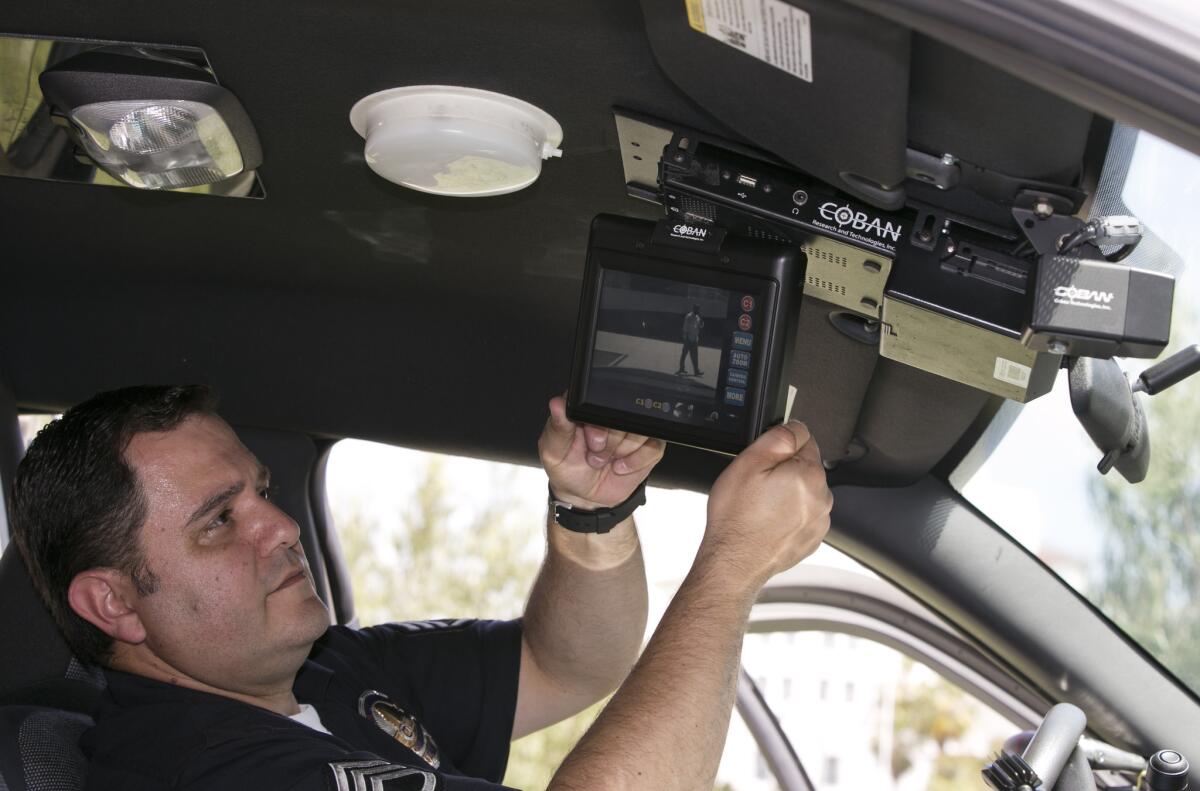Editorial: LAPD disconnect isn’t good for police or the public

For 12 years, in the aftermath of the Rampart corruption scandal, the Los Angeles Police Department operated under a federal consent decree that forced major changes on the long-troubled, much-criticized department. The LAPD was overseen by outsiders, its decisions second-guessed by judges and monitors because it couldn’t be trusted to govern itself. Only after a long list of wide-ranging reforms was instituted was the federal order finally lifted in 2013. Among the final requirements was the installation of in-car video cameras and voice-monitoring equipment to record encounters between police and the public.
So naturally it comes as a grave disappointment, if not exactly a shock, to learn just a year later that some LAPD officers tampered with many of those devices in an apparent effort to render them ineffective. The department needs to figure out how that was allowed to happen, and must take strong actions to ensure that nothing like it happens again. Officers must be made to understand that sabotage will not be tolerated, and that the department’s leaders intend to continue on the road to enlightened, reformed policing.
So far, video cameras and recording devices have been installed in only about 300 patrol cars. The cameras turn on when the cars’ lights and sirens go on or when they are manually activated. They record stops and encounters that occur in front of the vehicles. In addition, officers wear transmitters on their belts that relay their voices to antennas in the cars. Audio can be recorded from hundreds of yards away.
Except, that is, if the antenna is removed, as happened with some 90 cars, mostly in Southeast Division, which covers Watts, Jordan Downs and Nickerson Gardens and where there is a long history of rocky relationships and mistrust between LAPD officers and minority communities. Although the department appears to have put new rules in place to deal with the antenna problem, which emerged last summer, it did not try to identify those responsible because cars are driven by multiple officers and the dismantlings could have occurred at any point over several years. A separate investigation is now underway into whether officers are damaging their transmitters.
One of the advantages of the recording program, and one reason deliberate sabotage is so frustrating, is that the devices aren’t designed only to catch the police misbehaving. The point is to create an objective record of interactions between police and the public, and ultimately to reduce conflict. Recording traffic stops, shootings and other encounters can help discourage — or document — police misconduct and can also serve to clear officers if they are falsely accused of wrongdoing.
Chief Charlie Beck has said that he is committed to continued reform and that he is a strong supporter of the recording program. But the fact that the Police Commission and the LAPD Inspector General were not immediately informed of the problems is troubling. These were serious infractions, and the department’s leaders must make it clear that they will not be ignored.
More to Read
A cure for the common opinion
Get thought-provoking perspectives with our weekly newsletter.
You may occasionally receive promotional content from the Los Angeles Times.






